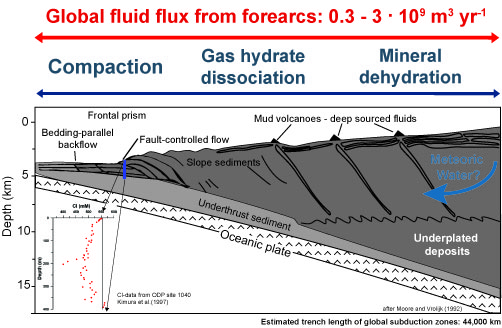Overview Theme B5
In subproject B5, we investigate the turnover of volatiles and fluids during sediment diagenesis in the forearc of subduction zones applying a combination of (ship-based) field work, numerical modeling, and laboratory experiments. More specifically, we focus on diagenetic processes controlling the formation and release of shallow (near sediment surface) and deep fluids emanating at cold seeps in the forearc environment. Biogeochemical processes such as organic matter degradation, precipitation of authigenic minerals, methane and gas hydrate formation, alteration of volcanic tephra, or dewatering of subducted and deeply buried minerals are generally investigated. The overall goal is to quantitatively evaluate the role of forearc processes in fluid and volatile cycling of subduction zones. At present, it is believed that the global flux of water from the forearcs of subduction zones is between 0.3-3 · 109 m3 yr-1. Main sources of water are the compaction of sediments, mineral dehydration, gas hydrate destabilization and the addition of meteoric water. The latter three processes add fresh water to the system which is often detected by negative chloride excursions in the pore fluids.

 Web Content Display
Web Content Display  Events
Events 







